Asteroids can pose a threat to life on Earth but are also a valuable source of resources to make fuel or water to aid deep space exploration. Devoid of geological and atmospheric processes, these space rocks provide a window onto the evolution of the solar system. But to really understand their secrets, scientists must know what’s inside them.
Only four spacecraft have ever landed on an asteroid – most recently in October 2020 – but none has peered inside one. Yet understanding the internal structures of these cosmic rocks is crucial for answering key questions about, for example, the origins of our own planet.
“Asteroids are the only objects in our solar system that are more or less unchanged since the very beginning of the solar system’s formation,” said Dr. Fabio Ferrari, who studies asteroid dynamics at the University of Bern, Switzerland. “If we know what’s inside asteroids, we can understand a lot about how planets formed, how everything that we have in our solar system has formed and might evolve in the future”.
There are also more practical reasons for knowing what’s inside an asteroid, such as mining for materials to facilitate human exploration of other celestial bodies, but also defending against an Earth-bound rock.
NASA’s upcoming Double Asteroid Redirection Test (DART) mission, expected to launch later this year, will crash into the 160 meters (525 feet) in diameter asteroid moon Dimorphos in 2022, with the aim of changing its orbit. The experiment will demonstrate for the first time whether humans can deflect a potentially dangerous asteroid.

But scientists have only rough ideas about how Dimorphos will respond to the impact as they know very little about both this asteroid moon and its parent asteroid, Didymos.
To better address such questions, scientists are investigating how to remotely tell what’s inside an asteroid and discern its type.
Asteroid types
There are many types of asteroids. Some are solid blocks of rock, rugged and sturdy, others are conglomerates of pebbles, boulders, and sand, products of many orbital collisions, held together only by the power of gravity. There are also rare metallic asteroids, heavy and dense.
“To deflect the denser monolithic asteroids, you would need a bigger spacecraft, you would need to travel faster,” said Dr. Hannah Susorney, a research fellow in planetary science at the University of Bristol, the UK. “The asteroids that are just bags of material – we call them rubble piles – can, on the other hand, blow apart into thousands of pieces. Those pieces could by themselves become dangerous.”
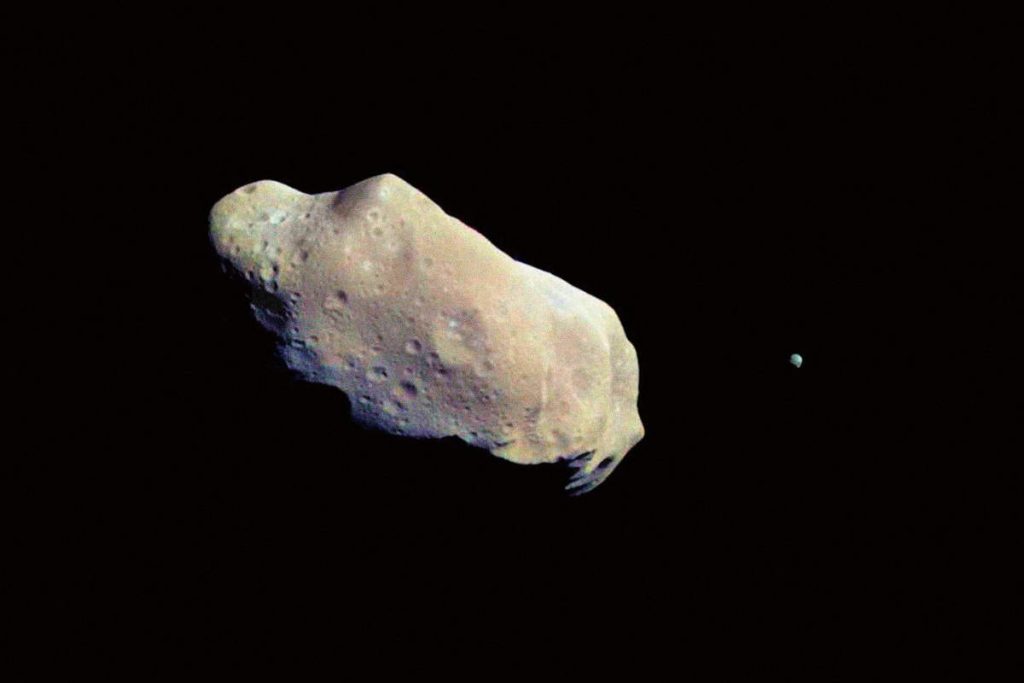
Dr. Susorney is exploring what surface features of an asteroid can reveal about the structure of its interior as part of a project called EROS.
This information could be useful for future space mining companies who would want to know as much as possible about a promising asteroid before investing in a costly prospecting mission as well as knowing more about potential threats.
“There are thousands of near-Earth asteroids, those whose trajectories could one day intersect with that of the Earth,” she said. “We have only visited a handful of them. We know close to nothing about the vast majority.”
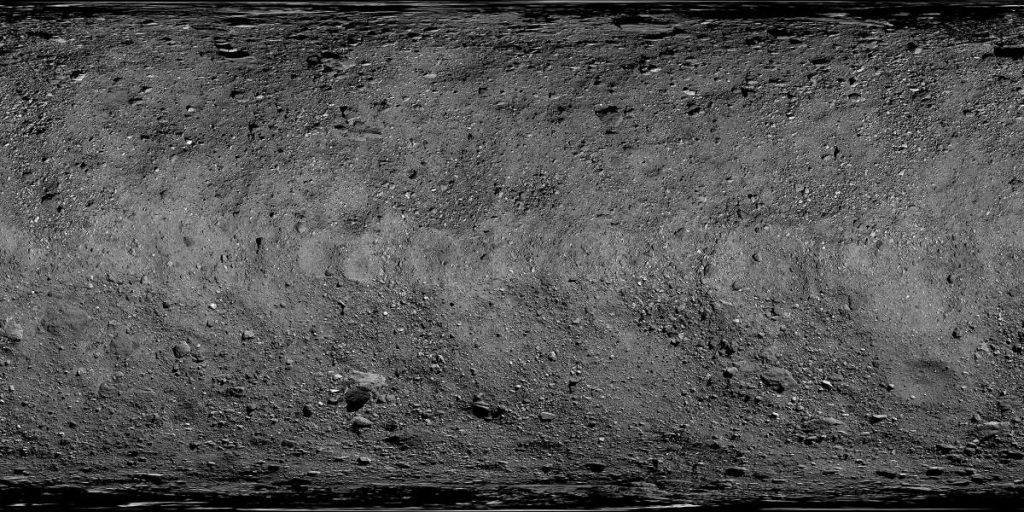
This global map of asteroid Bennu’s surface is a mosaic of images collected by NASA’s OSIRIS-REx spacecraft between Mar. 7 and Apr. 19, 2019. A total of 2,155 PolyCam images were stitched together and corrected to produce the mosaic. At 2 inches (5 cm) per pixel, this is the highest resolution at which a planetary body has been globally mapped. The spacecraft collected these images at distances ranging from 1.9 to 3.1 miles (3.1 to 5 km) above the asteroid’s surface. This detailed view of Bennu was used by the mission team during their selection of the primary and backup sample collection sites – Nightingale and Osprey. Full-sized versions of the mosaic are available for download here (mosaic only) and here (mosaic with coordinate system).
Asteroid Topography
Dr. Susorney is trying to create detailed topography models of two of the most well-studied asteroids – Itokawa (the target of the 2005 Japanese Hayabusa 1 mission) and Eros (mapped in detail by the NEAR Shoemaker space probe in the late 1990s).
“The surface topography can actually tell us a lot,” Dr. Susorney said. “If you have a rubble pile asteroid, such as Itokawa, which is essentially just a bag of fluff, you cannot expect very steep slopes there. Sand cannot be held up into an infinite slope unless it’s supported. A solid cliff can. The rocky monolithic asteroids, such as Eros, do tend to have much more pronounced topographical features, much deeper and steeper craters.”
Susorney wants to take the high-resolution models derived from spacecraft data and find parameters in them that could then be used in the much lower resolution asteroid shape models created from ground-based radar observations.
“The difference in the resolution is quite substantial,” she admits. “Tens to hundreds of meters in the high-res spacecraft models and kilometers from ground-based radar measurements. But we have found that, for example, the slope distribution gives us a hint. How much of the asteroid is flat and how much is steep?”
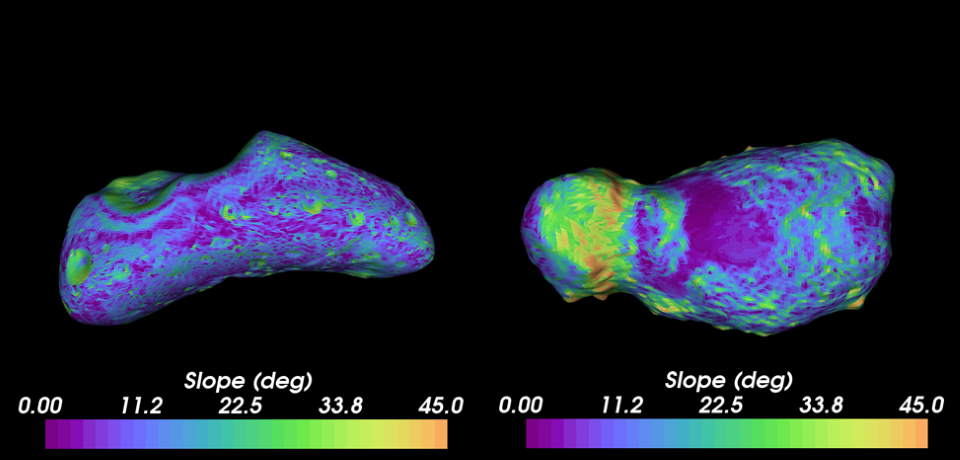
Dr. Ferrari is working with the team to prepare the DART mission. As part of a project called GRAINS, he developed a tool that enables modeling of the interior of Dimorphos, the impact target, as well as other rubble pile asteroids.
“We expect that Dimorphos is a rubble pile because we think that it formed from matter ejected by the main asteroid, Didymos, when it was spinning very fast,” Dr. Ferrari said. “This ejected matter then re-accreted and formed the moon. But we have no observations of its interior.”
An aerospace engineer by education, Dr. Ferrari borrowed a solution for the asteroid problem from the engineering world, from a discipline called granular dynamics.
“On Earth, this technique can be used to study problems such as sand piling or various industrial processes involving small particles,” Dr. Ferrari said. “It’s a numerical tool that allows us to model the interaction between the different particles (components) – in our case, the various boulders and pebbles inside the asteroid.”
Rubble pile
The researchers are modeling various shapes and sizes, various compositions of the boulders and pebbles, the gravitational interactions, and the friction between them. They can run thousands of such simulations and then compare them with surface data about known asteroids to understand rubble pile asteroids’ behavior and make-up.
“We can look at the external shape, study various features on the surface, and compare that with our simulations,” Dr. Ferrari said. “For example, some asteroids have a prominent equatorial bulge,” he says, referring to the thickening around the equator that can appear as a result of the asteroid spinning.
In the simulations, the bulge might appear more prominent for some internal structures than others.
For the first time, Dr. Ferrari added, the tool can work with non-spherical elements, which considerably improves accuracy.
“Spheres behave very differently from angular objects,” he said.
The model suggests that in the case of Dimorphos, the DART impact will create a crater and throw up a lot of material from the asteroid’s surface. But there are still many questions, particularly the size of the crater, according to Dr. Ferrari.
“The crater might be as small as ten meters (33 feet) but also as wide as a hundred meters (330 feet), taking up half the size of the asteroid. We don’t really know,” said Dr. Ferrari. “Rubble piles are tricky. Because they are so loose, they might as well just absorb the impact.”
No matter what happens on Dimorphos, the experiment will provide a treasure trove of data for refining future simulations and models. We can see whether the asteroid behaves as we expected and learn how to make more accurate predictions for future missions that billions of lives on Earth may very well depend on.
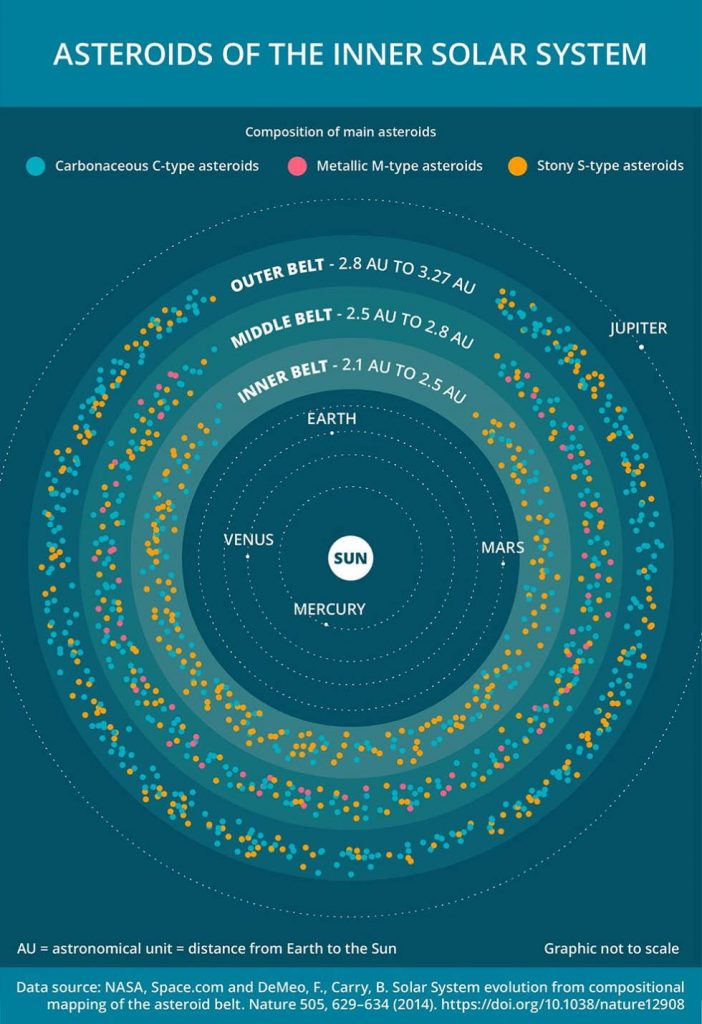
Source
This article was originally published in Horizon Magazine with the title of “How scientists are ‘looking’ inside asteroids”.
The research in this article was funded by the EU. If you liked this article, please consider sharing it on social media.
- Global food supply is in danger. Microalgae promise abundant healthy food and feed in any environment - September 27, 2022
- Turning waste into energy reduces the amount of waste entering landfills and helps to combat climate change - June 16, 2022
- Intermediate black holes: where are they? - May 8, 2022
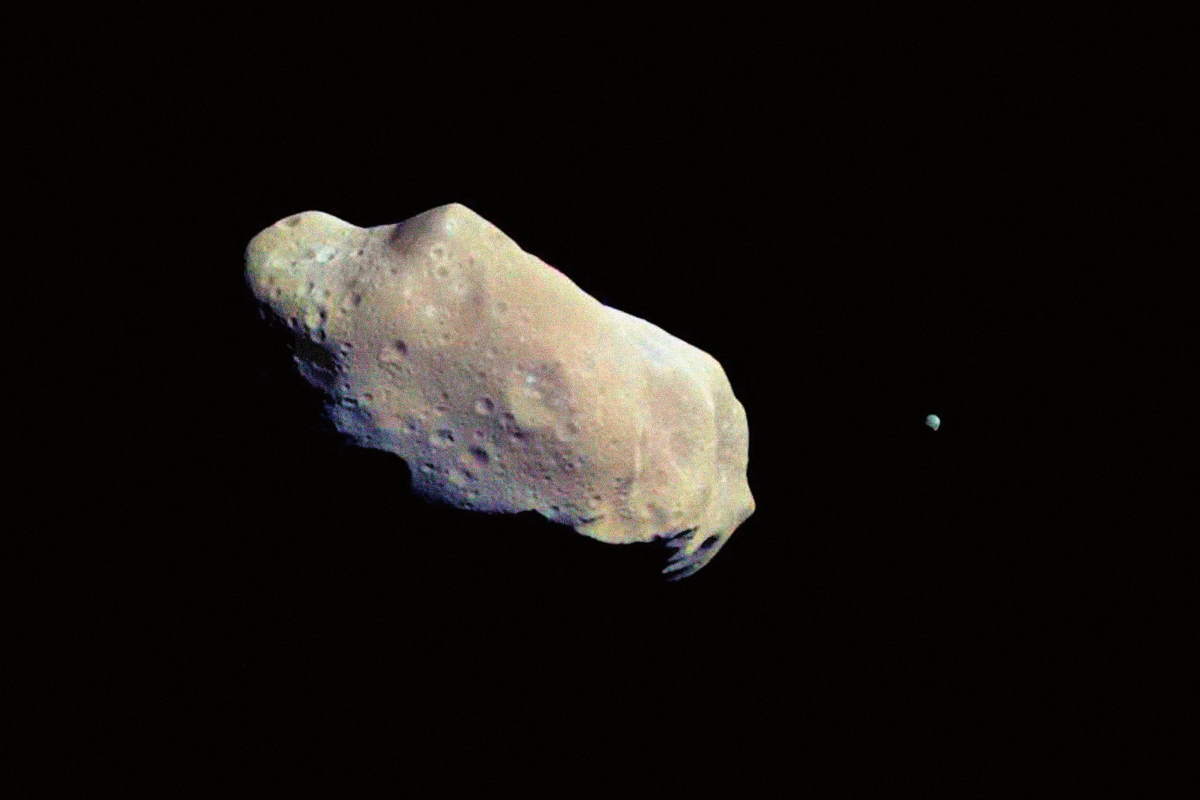
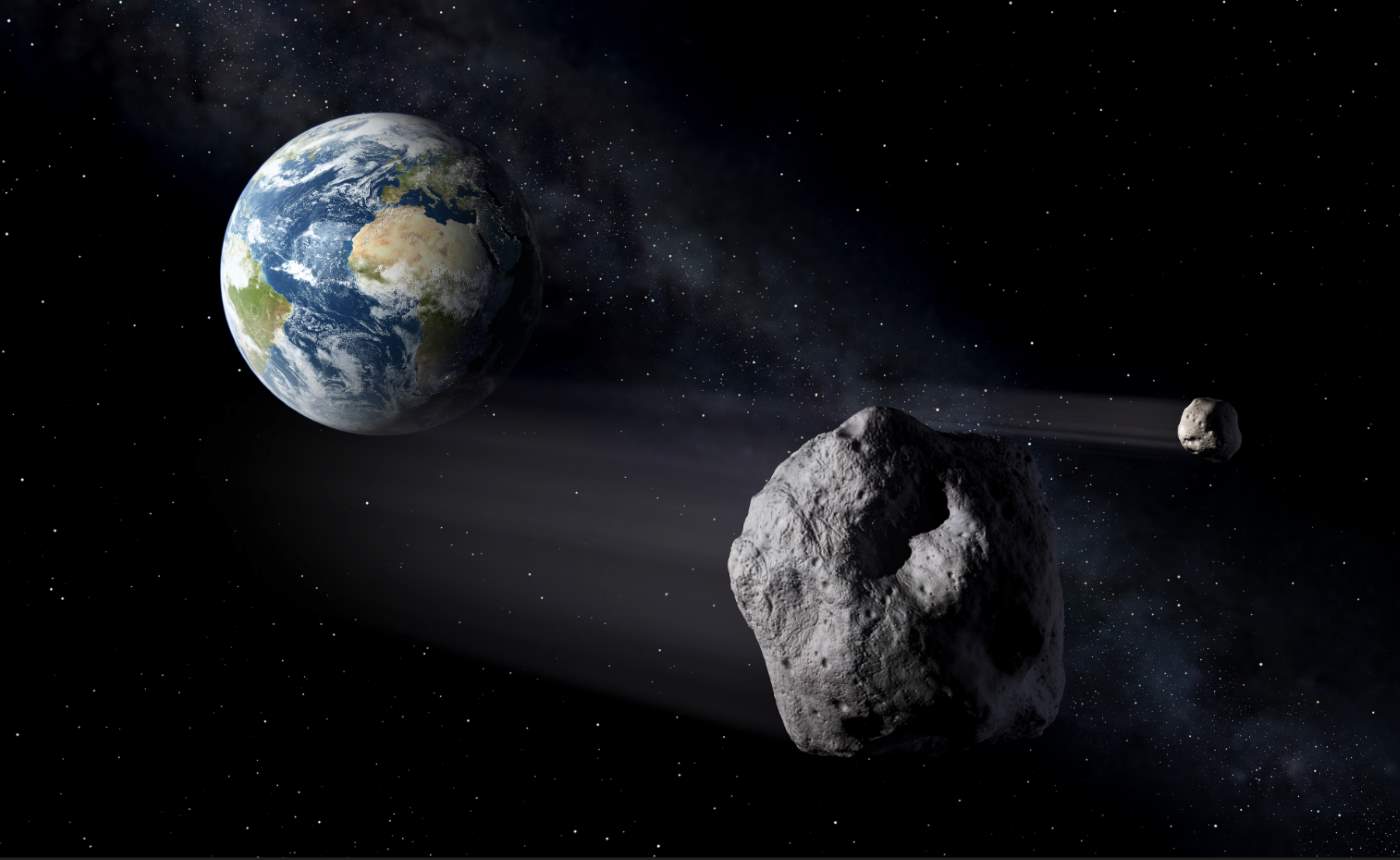
Nice